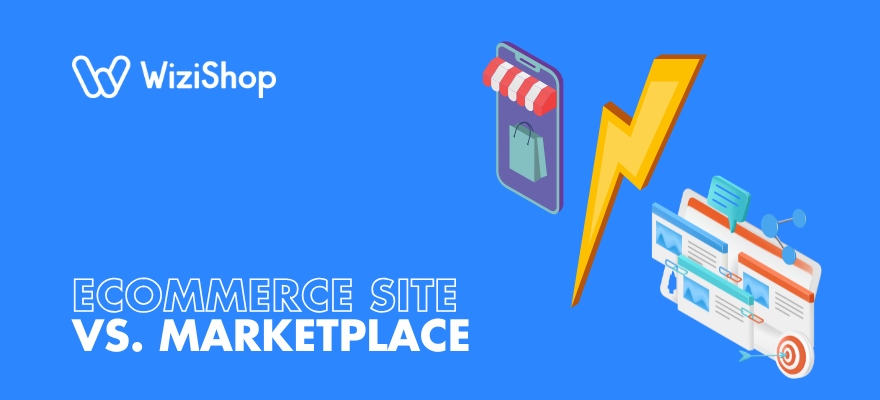Key points in this article:
- Two different models: ecommerce site = independence, marketplace = immediate visibility.
- An ecommerce site means freedom, a tailor-made strategy, a sustainable brand, but all the logistics to manage.
- Marketplaces offer speed of sales to a massive audience, but they’re dependent on third-party platforms.
- The choice depends on your products, resources, and goals (rapid growth or long term).
- Combining the two is the key to a successful strategy.
An individual ecommerce site or a marketplace? This is a question that many entrepreneurs interested in online sales ask themselves.
Between total independence and immediate visibility, it’s difficult to decide... And as is often the case with web trends, the answers are quite subjective.
Some prefer a third-party platform to quickly test their products, while others rely on their own store to build a strong and sustainable brand.
In this article, I’ll try to explore in detail the reasons for choosing one or the other model, or even combining the two, to help you see more clearly and, who knows, find the path that best suits your project.
To make successful strategic choices, follow these tips: they’ll assist you in leveraging the strengths of each option without suffering from their limitations.
Ecommerce site vs. marketplace: Two different models
What is an ecommerce website?
An ecommerce or “electronic commerce” website refers to a site that offers commercial exchanges over the internet. Simply put, it involves buying and selling goods or services online, via a website.
It’s like a cozy store where you welcome shoppers, but online!
To build your website, there are turnkey solutions like WiziShop (to name just one) that are ultra-accessible and designed to best pamper your visitors.
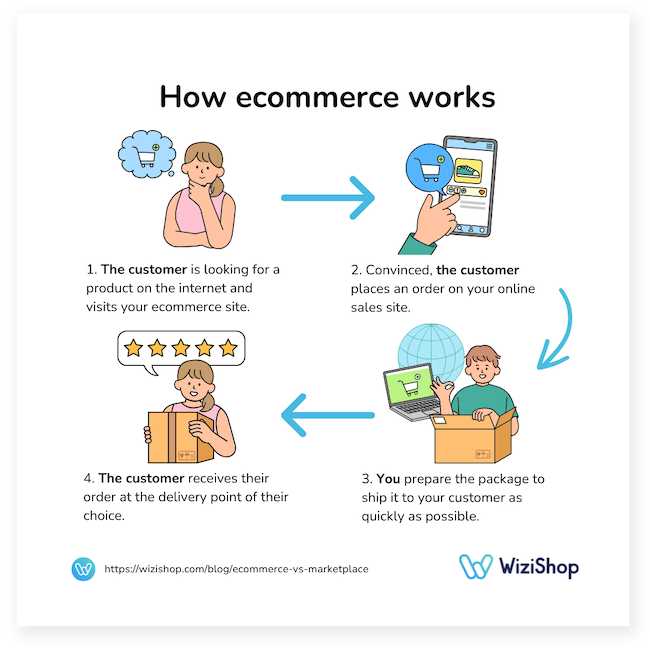
→ Our article on how ecommerce works
The same thing applies if you have a physical shop: selling on your own ecommerce site ensures that you extend the experience beyond your walls and bring your world to life at any time of the day or night for your buyers, on their smartphone or computer!
→ Our article on brick and mortar vs. online
What is a marketplace?
A marketplace is an online platform that connects multiple sellers and buyers. Unlike a traditional ecommerce site, which is owned by a single merchant, a marketplace brings together many merchants in one place, much like a large virtual shopping mall.
Amazon, Cdiscount, Etsy, Fnac, Rakuten... These are some giants of online commerce, sites that are all marketplaces functioning as veritable commercial hubs.
In practical terms, when you sell on a marketplace, you don’t need to create your own store from scratch.
You open a seller account, put your products online, and in just a few hours, you can start reaching a huge audience.

Here’s a real-life example: I’m looking for a vase to brighten up my living room decor. On Amazon, I just typed in “colorful vase” and came across this listing.
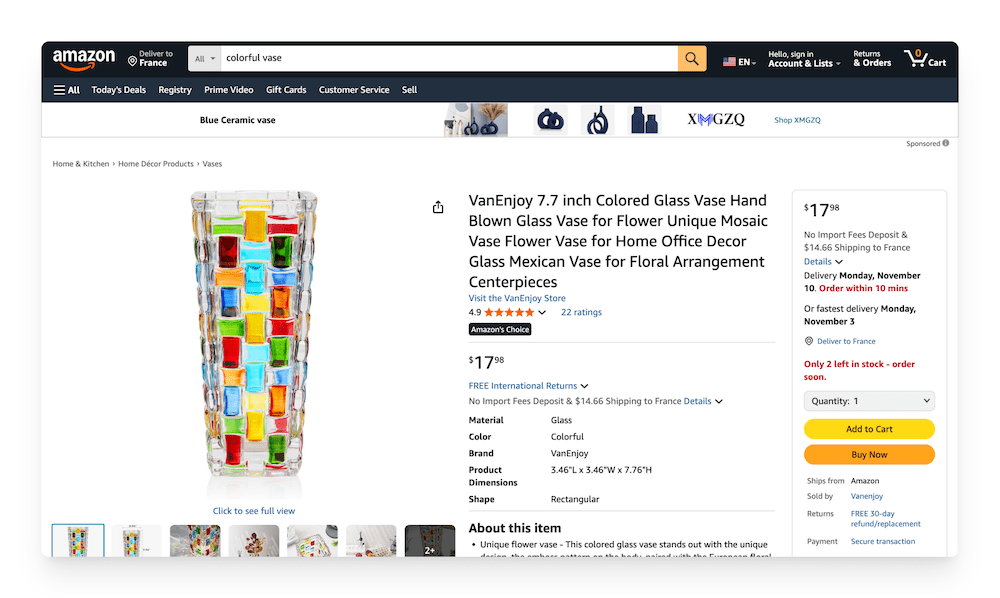
Do I personally know the “VanEnjoy” store? Not at all. Am I going to order this vase? Yes, because I like it, and the price suits me.
And outside of the marketplace, I’d certainly never have known about this brand, this vase, and the pleasure of finally finding my perfect new decorative item to hold my next bouquet of roses!
Every sales model has its drawbacks, so we’ll now analyze the advantages and disadvantages of each medium.
Spoiler alert: there’s no right or wrong situation, just uses that are suited to each need.
→ Our article on the types of ecommerce
Advantages and disadvantages of ecommerce sites
Advantages of ecommerce sites
- Total control over your business
The first advantage is total control. The brand, data, shopping experiences: everything is in the hands of the e-tailer.
It’s the e-tailer who chooses their graphic universe (charter, visual identity, page design), who builds their shopping experience (clear navigation, simplified checkout process, additional product suggestions), who decides how to communicate (tone, messages, brand story), and who adds the appropriate features (search engine, practical filters, personalized recommendations).
- Your strategy, tailored to your needs
With an ecommerce site, it’s the e-tailer who drives their strategy in real time without worrying about any rules.
An e-tailer who sees a trend on social media can decide on the spot to order or manufacture the popular product, create content around this new item on their social media channels, and determine the price they want to charge for this new product.
For example, Labubus are all the rage on social networks: for an artist who crochets, they can create crocheted Labubus, make videos on social networks with the chance of going viral, sell their creations on his site, and all that without asking anyone for anything!
I’ll share a video tutorial to turn this idea into a commercial boom… Let me know if it works for you!
- Your own customer database
Customer loyalty becomes easier and, above all, more effective with an ecommerce site. When a consumer places an order, they remember the e-tailer’s brand first and foremost, not that of an anonymous platform.
Here’s a short checklist to aid you in understanding the importance of customer relations in ecommerce product sales:
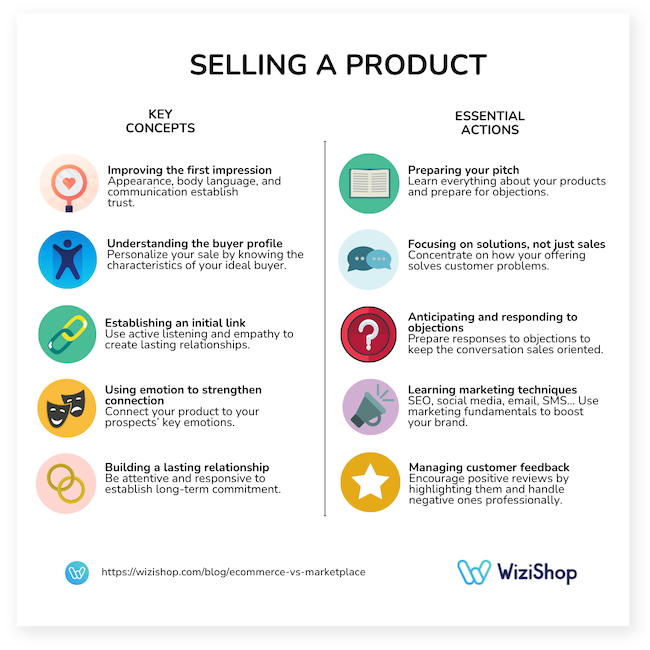
These steps help create a lasting relationship, which goes well beyond the simple transaction and gradually transforms customers into true brand ambassadors: what a pleasure for the retailer to see one of their customers share their latest finds on their Insta account in a completely spontaneous way following their purchase (this is what we call UGC, user-generated content)!

Disadvantages of ecommerce sites
- Visibility of your ecommerce site
Ecommerce is based on a clear principle: your website doesn’t benefit from an existing flow of visitors, unlike marketplace services, which bring together thousands of sellers and buyers every day.
- Acquisition costs
All of this requires a significant marketing investment, especially at launch.
Creating content, working on search engine positioning, testing and adjusting advertising campaigns... All these actions require time, energy, and budget. Developing an ecommerce business is more like running a marathon than a sprint.
- Burden of logistics
Owning an ecommerce site also means taking on the entire management of the customer experience: after-sales service, product returns, inventory, shipping, etc. The e-tailer becomes the sole guarantor of shopper satisfaction.
Whereas a third-party platform such as a marketplace can take care of some of these aspects, here everything rests on the e-tailer’s shoulders.
→ Discover all the advantages and disadvantages of ecommerce.
Advantages and disadvantages of marketplaces
A marketplace is a bit like the vast concourse of an international airport: thousands of people pass through it every day, ready to board flights to new destinations.
Amidst this constant flow, there are shops and pop-up stores that attempt to capture the attention of travelers looking for specific products before their trip or simply wanting to browse aimlessly.

Advantages of marketplaces
- Immediate traffic
In online sales, the marketplace model is appealing because of its instant visibility. Whereas the ecommerce model requires building up a website audience step by step, a marketplace offers direct access to millions of active visitors.
Every day, thousands of sellers offer their products and take advantage of marketplace services to quickly reach an existing customer base.
- Buyer confidence
The reputation and services of these platforms play a key role: many consumers prefer to buy through a third-party platform such as Walmart or Etsy because they’re already familiar with the environment and feel protected there.
Return policies, secure payment, and centralized customer service inspire confidence and reassure both sellers and buyers.
- Speed of launch
Another major advantage of the marketplace model is its ease of deployment.
There’s no need to create a complete website or develop a sophisticated checkout process: all you need to do is open a seller account, upload product listings, and add a few photos.
Sales can begin in just a few hours.
Disadvantages of marketplaces
- Competition
On a marketplace, goods are listed alongside dozens, sometimes hundreds, of other similar items.
All it takes is for a competitor to slightly lower their price or display more positive reviews to divert buyers’ attention. It’s a constant battle for visibility.
Let’s go back to the example of my “colorful vase” on Amazon: at the top left of the results page, you can see that there are more than 6,000 colorful vases listed on the platform!
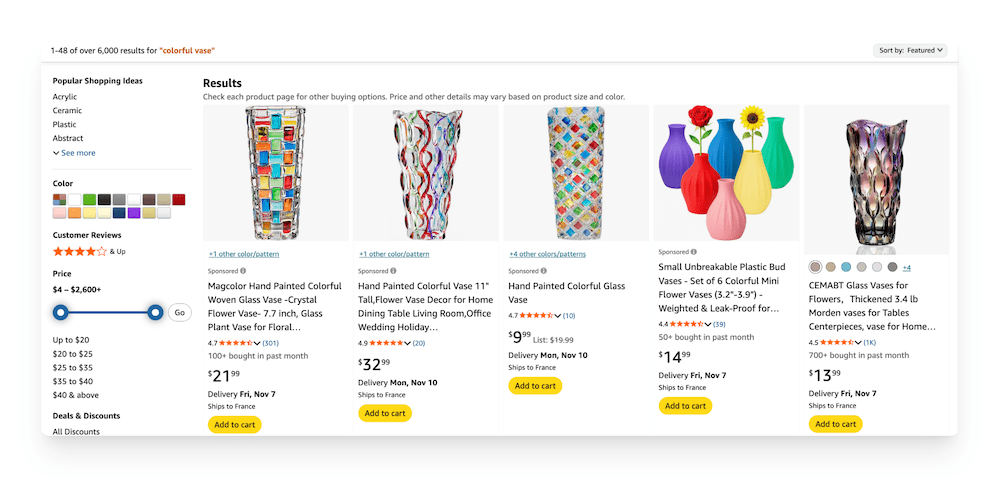
- Sales commissions
Added to this is the commission charged on each sale. With each transaction, a percentage is paid to the platform, which automatically reduces margins. The higher the sales volume, the more difficult this cost becomes to absorb.
To give you an idea of the scale, here are the selling fees charged by Amazon:
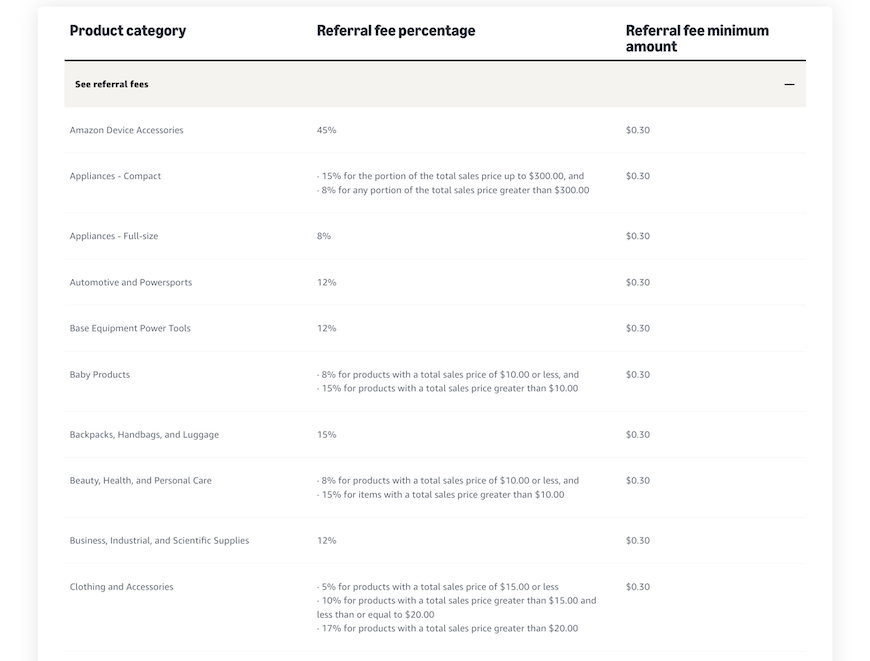


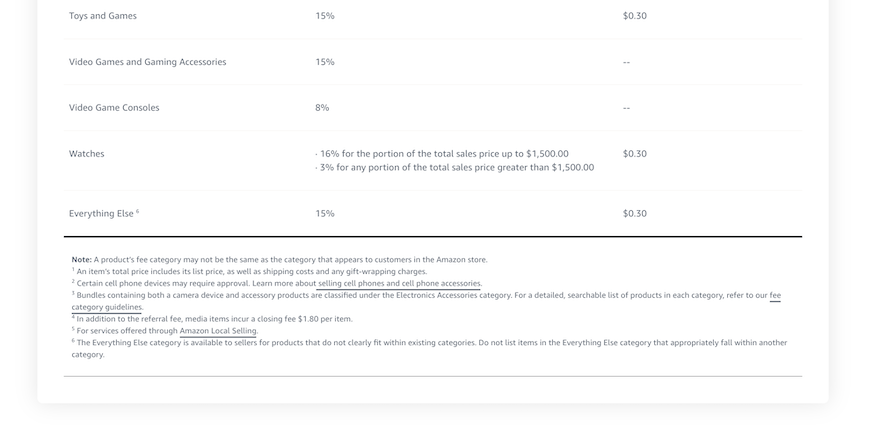
- Commercial dependence
Selling on a marketplace means accepting dependence on the platform.
The rules can change overnight, a product listing can be suspended without notice, and visibility depends entirely on algorithms that no one controls... especially not external e-tailers.
In other words, e-tailers are never completely in control of their business.
And that’s where the real question arises: should you focus on your own ecommerce site, choose a marketplace, or combine the two?
Ecommerce site vs. marketplace: How do you make the right choice?
Based on your products
The choice between an ecommerce website and a marketplace starts with a simple question: the nature of the products.
If the items are exclusive and original, an ecommerce site becomes a powerful ally.
Take the example of a handmade jewelry designer: on a marketplace, their unique pieces are likely to get lost among thousands of similar items, which are often standardized and offered at low prices...
On their own ecommerce site, on the other hand, they can showcase their brand universe, tell their story, highlight their craftsmanship, and attract customers who are looking for precisely this authenticity and personalization.
An ecommerce site also allows them to cultivate a high-end image and create consistent experiences from the first click to delivery, as is the case here with Moon Magic.
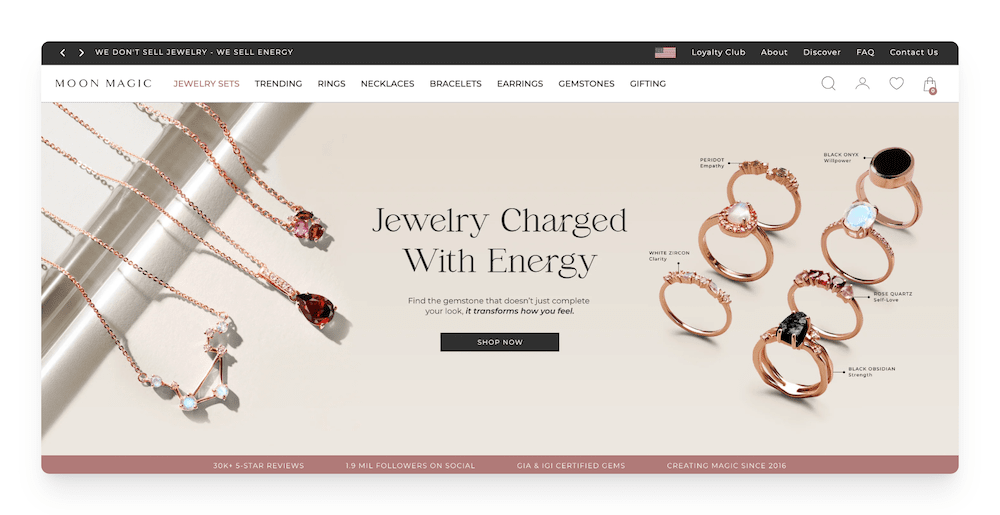
Conversely, if the products are more standard or intended for volume sales, as is the case for electronic accessories, toys, everyday goods, trendy items, etc., marketplaces often become the most suitable platforms.
In this case, the key is to manage your competitiveness: work on your offering, optimize your product listings, and collect as many positive reviews as possible to stand out from the competition, as is the case here with wireless mice, for example.
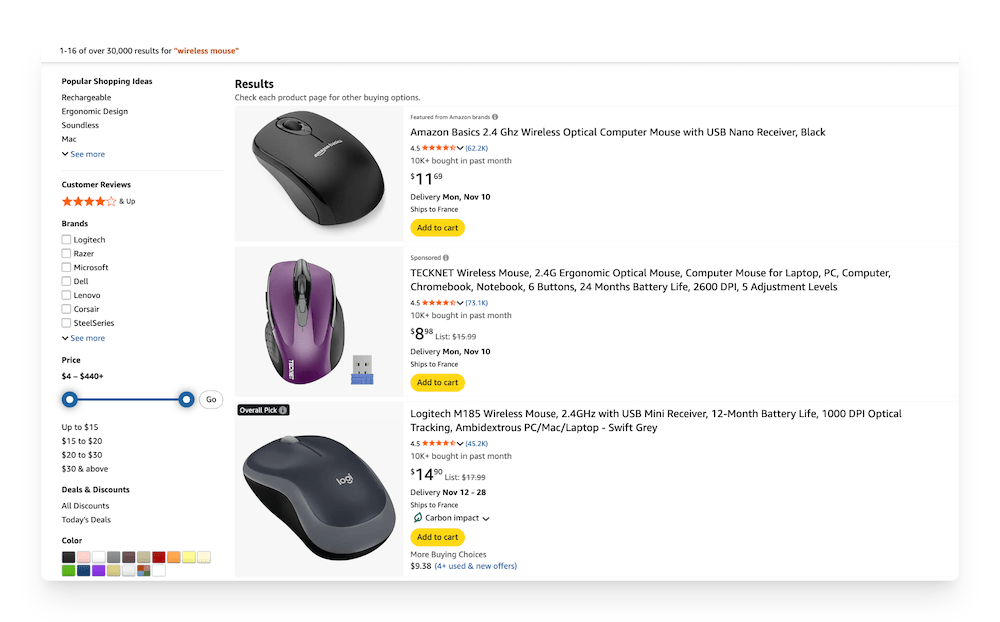
Based on available resources
The second element to consider is the available resources, whether financial or human.
If the ecommerce seller has a solid marketing budget, a little time, and the desire to invest in content creation, advertising, or SEO, then having an ecommerce site becomes advantageous.
Based on growth objectives
This raises an essential question: should you aim to sell quickly or focus on the long term?
If the ambition is to build a sustainable brand, then an ecommerce site is essential.
A creator of ethical goods, for example, can highlight their responsible approach and manufacturing process and create a shopping experience that reflects their values.
In the long term, this type of strong positioning can only be fully expressed on a dedicated digital commerce site: this is the case for a brand like Herbivore, which has built its online reputation with a strong identity.
- Inspiring storytelling content starting with an ecommerce site:

- Essential products on marketplaces:
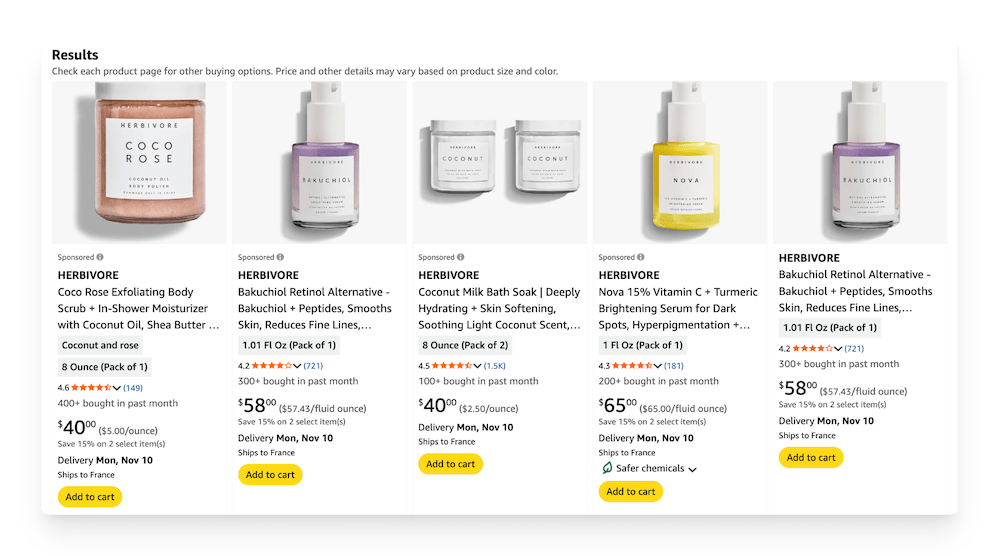
- Products now sold in physical stores:
@herbivorebotanicals Tiktok is so bad for our shopping habits...but so good for our skin! \ud83d\udc9b Shop Super Nova at @Sephora and on our website! #herbivorebotanicals #herbivore #skincare #skintok #vitaminc #brightening #eyecream #moisturizer \u266c original sound - Herbivore Botanicals
Based on your need for autonomy
The choice also depends on how you like to work.
If you’re primarily looking for freedom, independence, and total control over your branding, then an ecommerce site is the ideal option.
The e-tailer decides everything: pricing policy, communication strategy, promotions, customer relations, etc.
Well, we’ve provided quite a bit of information, so to help you really clarify all the points, let’s take a look at a small summary table of the fundamental differences between the models.
| Criteria | Ecommerce site | Marketplace |
|---|---|---|
| Ownership & control | You are in charge: visual identity, purchasing journey, customer data, marketing. | Platform dependency: imposed rules, algorithms, possible suspension. |
| Branding | Direct promotion of your universe and your brand. Customers remember you. | The consumer remembers the platform rather than your brand. |
| Traffic & visibility | To generate yourself (SEO, advertising, social networks, emailing). | Massive audience already present, immediate visibility. |
| Initial investment | More significant (creation, marketing, traffic acquisition). | Low (quick online, seller account, visible products). |
| Margin & profitability | Higher margins (no commissions), but marketing costs to be expected. | Commissions on each sale (5 to 20%), reduced margins. |
| Customer relations | Data and loyalty in your hands (newsletter, loyalty program, retargeting). | Inaccessible customer data, difficult to grow loyalty (shoppers remain customers of the marketplace). |
| Competition | You are alone on your ecommerce site, but the competition is outside (networks, Google, etc.). | Products listed with thousands of competitors, price wars, and reviews. |
| Logisitcs | To be managed yourself (after-sales service, returns, shipping). | Sometimes made easier, but not always. |
| Launch speed | Longer (site to create, brand identity to set up). | Very fast: your products are online in a few hours. |
| Sustainability | Ideal for building a strong, independent brand over the long term. | Ideal for quickly testing a product or selling off stock. |
What if, ultimately, the real solution was not to choose, but to combine both models?
Many entrepreneurs fall into the trap of thinking it’s either selling via their own ecommerce site or via a marketplace, when in fact the two approaches can complement each other perfectly.
By combining the two, you win on all fronts: the speed and immediate visibility of the marketplace, combined with the independence and sustainability of an ecommerce store.
The marketplace becomes a launch pad and a showcase, while the ecommerce website allows you to build a solid, profitable, and independent business.
Was our advice helpful? What form will your future online sales business take? We want to know everything in the comments section of this article!
FAQ
Can you sell on an ecommerce site and a marketplace simultaneously?
Yes, you can sell on both your ecommerce site and a marketplace; in fact, the two are completely complementary.
Is it better to start with a marketplace or your own ecommerce site?
It’s often easier to start with a marketplace just to test your products (immediate visibility), then create your own ecommerce site to maintain control over your brand and customer base.
Can you use several marketplaces at the same time?
Yes, there’s nothing to stop you from being present on several marketplaces at the same time to reach more customers.
What commissions do marketplaces charge?
Commissions vary depending on the platform: generally between 5% and 20% of the sale price, sometimes with additional fixed fees.


